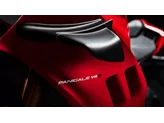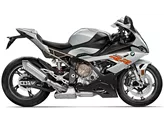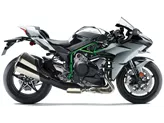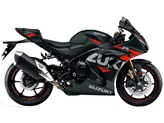Kawasaki Ninja ZX-10R 2016 vs. BMW S 1000 RR 2020

Kawasaki Ninja ZX-10R 2016

BMW S 1000 RR 2020
Genel bakış - Kawasaki Ninja ZX-10R 2016 vs BMW S 1000 RR 2020
The Kawasaki Ninja ZX-10R model year 2016 and the BMW S 1000 RR model year 2020 are both supersport motorcycles with similar engine types, inline four-cylinder engines. However, there are several differences between the two models in terms of technical specifications and performance.
In terms of engine specifications, the Kawasaki Ninja ZX-10R 2016 has a bore of 76 mm and a stroke of 55 mm, while the BMW S 1000 RR 2020 has a larger bore of 80 mm and a shorter stroke of 49.7 mm. This difference in engine dimensions can affect the power and torque characteristics of the two motorcycles. The Kawasaki Ninja ZX-10R 2016 has an engine power of 200.1 HP and a torque of 114.3 Nm, while the BMW S 1000 RR 2020 has a slightly higher engine power of 207 HP but a slightly lower torque of 113 Nm. Both motorcycles have a compression ratio of 13, indicating high-performance engines.
In terms of suspension, both motorcycles feature upside-down telescopic forks at the front and swing arm suspension with a monoshock at the rear. The suspension of both models can be adjusted for compression, preload, and rebound. The rear suspension of both motorcycles is made of aluminum, which helps in reducing weight and improving handling.

Kawasaki Ninja ZX-10R 2016
Both motorcycles have aluminum frames, which provide a lightweight and rigid structure for improved handling and stability. The braking systems on both motorcycles consist of double disk brakes at the front, with the BMW S 1000 RR 2020 featuring radial technology for enhanced braking performance.
In terms of dimensions and weights, both motorcycles have the same front and rear tire widths and diameters, with the front tire width being 120 mm and the rear tire width being 190 mm, both with a diameter of 17 inches. The wheelbase of the BMW S 1000 RR 2020 is slightly longer at 1441 mm compared to the 1415 mm wheelbase of the Kawasaki Ninja ZX-10R 2016. The seat height of the BMW S 1000 RR 2020 is also slightly higher at 824 mm compared to the 813 mm seat height of the Kawasaki Ninja ZX-10R 2016. Both motorcycles have fuel tank capacities of around 17 liters.

BMW S 1000 RR 2020
In terms of strengths, the Kawasaki Ninja ZX-10R 2016 is praised for its great chassis geometry, high-quality chassis components, very good brakes, and a comprehensive electronics package. On the other hand, the BMW S 1000 RR 2020 is praised for its very linear power delivery, wide rev range, excellent Dynamic Damping Control (DDC) system, and a top-notch electronics package. The BMW S 1000 RR 2020 is also considered to be a harmonious overall package both on the road and on the racetrack.
In terms of weaknesses, the Kawasaki Ninja ZX-10R 2016 is criticized for its cockpit not being optimally readable. On the other hand, the BMW S 1000 RR 2020 is criticized for lacking a bit of character compared to other competitors and lagging behind on the spec sheet in direct comparison.
Overall, both the Kawasaki Ninja ZX-10R 2016 and the BMW S 1000 RR 2020 are high-performance supersport motorcycles with their own strengths and weaknesses. The choice between the two would depend on individual preferences and priorities, such as riding style, brand preference, and desired features.
Teknik Özellikler Kawasaki Ninja ZX-10R 2016 ile karşılaştırıldığında BMW S 1000 RR 2020
Karşılaştırıldığında Artıları ve eksileri
Karşılaştırıldığında Artıları ve eksileri
Kawasaki Ninja ZX-10R 2016

ZX-10R Ninja'nin belli bir ihtisami var, ilk kalkista çok dengeli görünüyor, yariçapa biraz zorlamaniz gerekiyor. Ancak birkaç turdan sonra bu etki, dogru bir çizgiye izin veren inanilmaz bir hassasiyete dönüsüyor. Motor simdi gerçekten fark edilir derecede daha güçlü ve Kawa'yi sadece siki Kawasaki hayranlarina degil, daha fazlasina hitap edecek son derece iyi bir genel paket haline getiriyor. Kawa'daki çekis kontrolü özellikle olumlu ve çok hassas bir sekilde düzenleniyor. Motor frenini bile ayarlayabiliyorsunuz - yani elektronik özelliklerde kesinlikle bir eksiklik yok. ZX-10R, 2016 yilinda Euro4 uyumlu olan tek superbike!
BMW S 1000 RR 2020
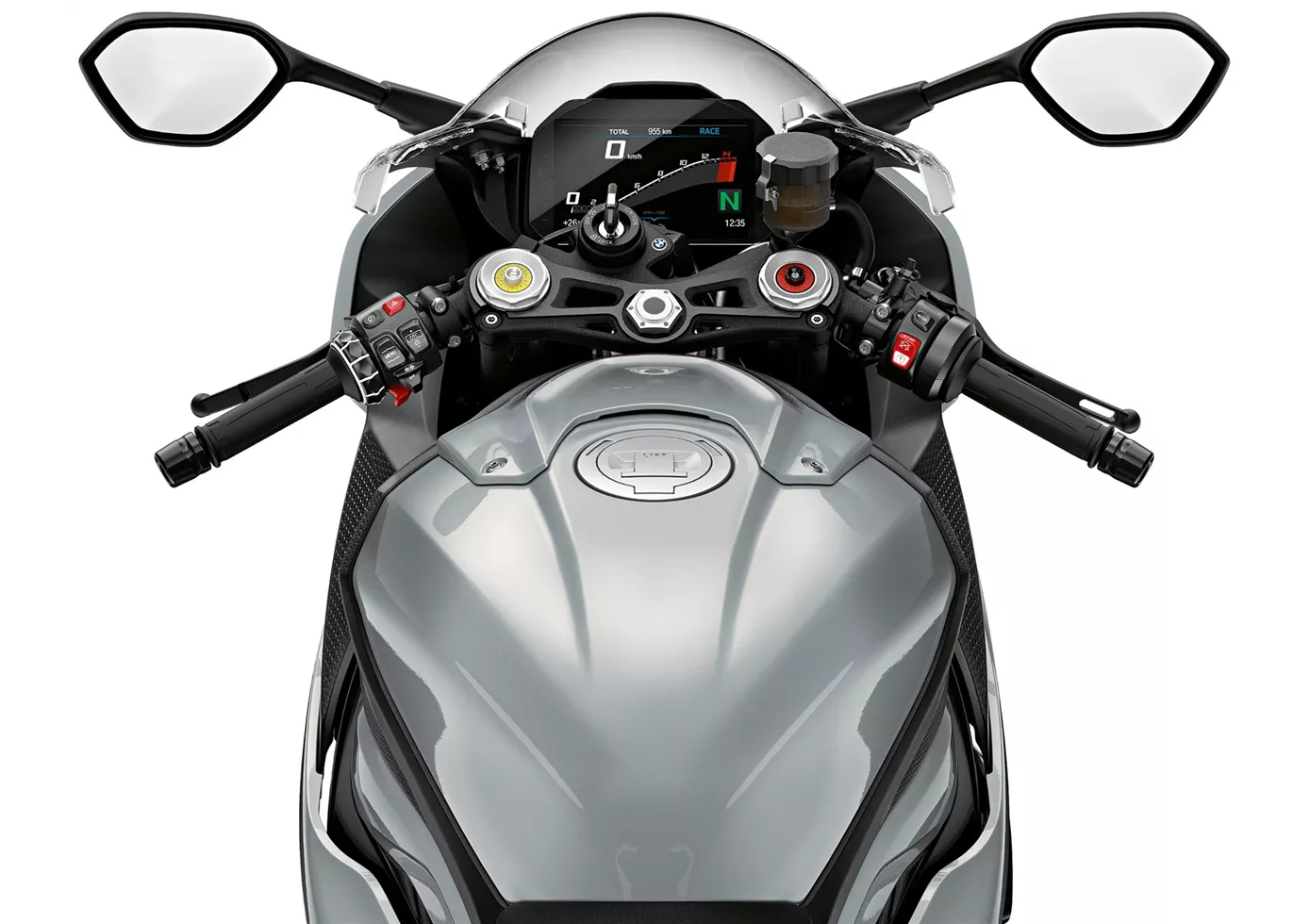
Gerçek bir "çok yönlü" superbike. BMW, hem yaris pistinde hem de köy yollarinda güçlü yönlerini nasil kullanacagini bilir. Degisken eksantrik mili kontrolü sayesinde, güçlü motor alt uçta zaten etkileyicidir ve her alanda bol miktarda güç ile tüm devir araliginda uyumlu bir sekilde hizlanir. Sasi, her durumda hobi amaçli binenler için kesinlikle olaganüstüdür, seffaf geri bildirim saglar ve birçok ayar seçenegi sunar. Sürüs pozisyonu sportif ancak nispeten rahat. Elektronik aksam sürücüye patronluk taslamadan çok uyumlu bir sekilde çalisiyor - ÜSTÜN!
Fiyat Karşılaştırması Ortalama Piyasa Fiyatı Kawasaki Ninja ZX-10R vs BMW S 1000 RR
There are a few key differences between a Kawasaki Ninja ZX-10R 2016 and a BMW S 1000 RR 2020. In terms of price, the actual average price of a Kawasaki Ninja ZX-10R 2016 is about 2% higher. A Kawasaki Ninja ZX-10R 2016 experiences a loss of 1,650 USD in one year and 1,600 USD in two years of ownership. This is offset by a loss of 430 USD and 140 USD for a BMW S 1000 RR 2020. Compared to BMW S 1000 RR 2020 there are less Kawasaki Ninja ZX-10R 2016 bikes available on the 1000PS.de Marketplace, specifically 4 compared to 16. It takes less time to sell a BMW S 1000 RR with 68 days compared to 100 days for the Kawasaki Ninja ZX-10R. Since model year 2005 1000PS.de editors have written 51 reviews for the Kawasaki Ninja ZX-10R and 135 reviews for the BMW S 1000 RR since model year 2010. The first review for the Kawasaki Ninja ZX-10R was published on 1/11/2004 and now has more than 2,900 views. This compares to more than 4,000 views for the first review on BMW S 1000 RR published on 4/16/2008.


